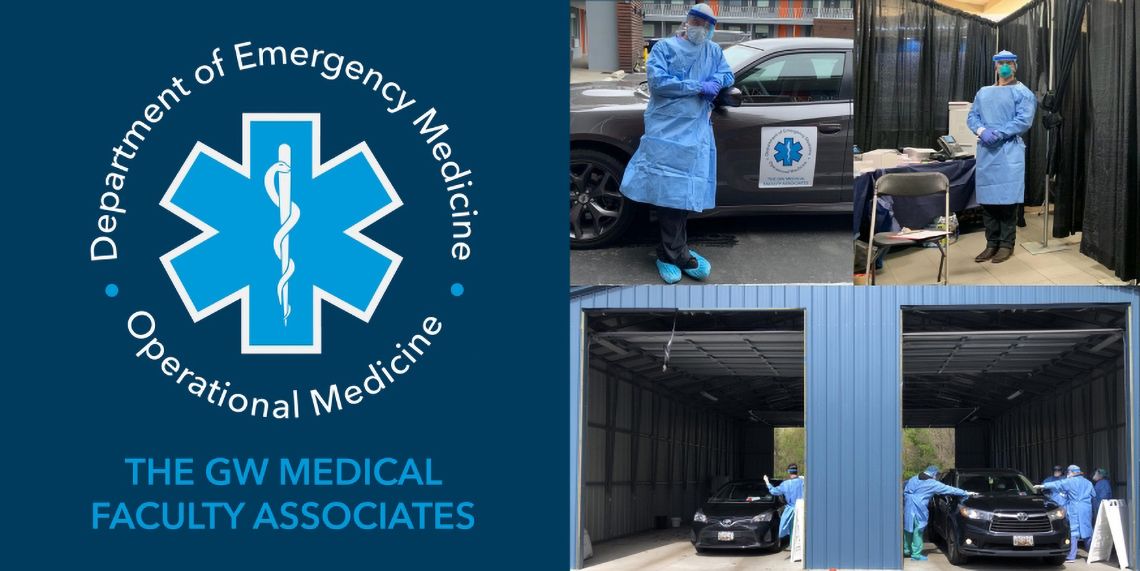
In the past month, the George Washington University Emergency Medicine group has established a COVID-19 Emergency Medicine Strike Team(5). In collaboration with the DC Department of Health (DOH) and the GW Medical Faculty Associates, the EMED Strike Team has established three different mechanisms for testing patients with goals of balancing access to testing, protection of the public, and protection of healthcare workers. All three mechanisms keep patients out of traditional clinics and hospital emergency rooms and may decrease the spread of disease to the general public.
For high-risk patients with mobility issues and for people in institutions such as nursing homes, the Strike Team will go into the field to perform testing. Over the past month, the EMED Strike Team has gone to “hot spots” around the city to perform COVID testing. By doing so, persons under investigation can remain in self-quarantine provided that do not develop severe symptoms(5). Entering the home of a COVID-19 positive individual poses significant risks to the healthcare worker. Within this “hot zone,” almost every surface in the house must be considered contaminated(5). Strict compliance with safety protocols is required including the proper donning and doffing of personal protective equipment (PPE) and utilization of surface and hand wipes(6). After testing, the Strike Team delivers the test swabs directly to the DC DOH laboratories for processing(Figure 1).
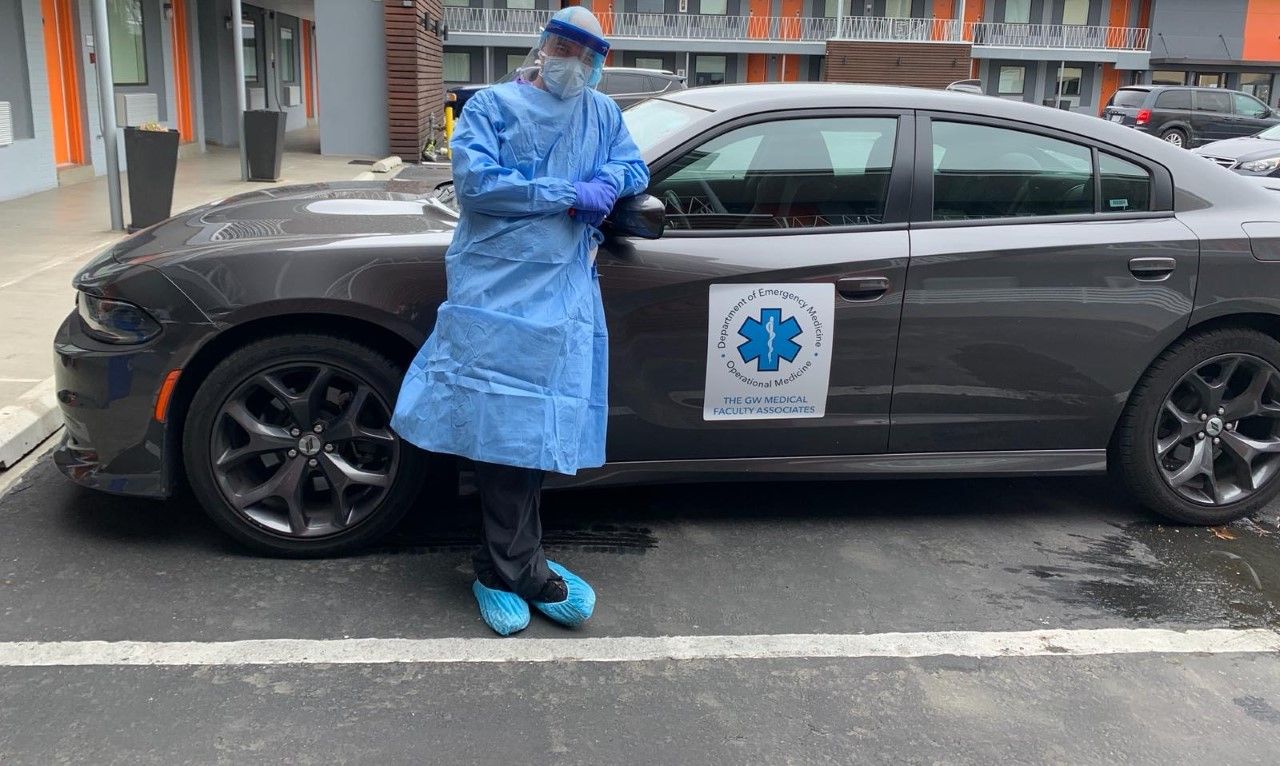
Figure 1: Dr. Alptunaer performing house to house testing with the strike team. He is wearing PPE prior to testing a patient.
For low-risk patients or for patients with mild symptoms and no mobility issues, in-person walk-up testing tents have been established. The advantage of having patients come to the testing tent is increased safety for healthcare workers due to decreased donning and doffing of PPE. Prior epidemics with the infectious disease have shown that the donning and doffing is one of the highest risk activities for exposure(7). This mechanism is ideal for patients with mild symptoms. It is important that the testing tents are separated from patients with general medical complaints(Figure 2).
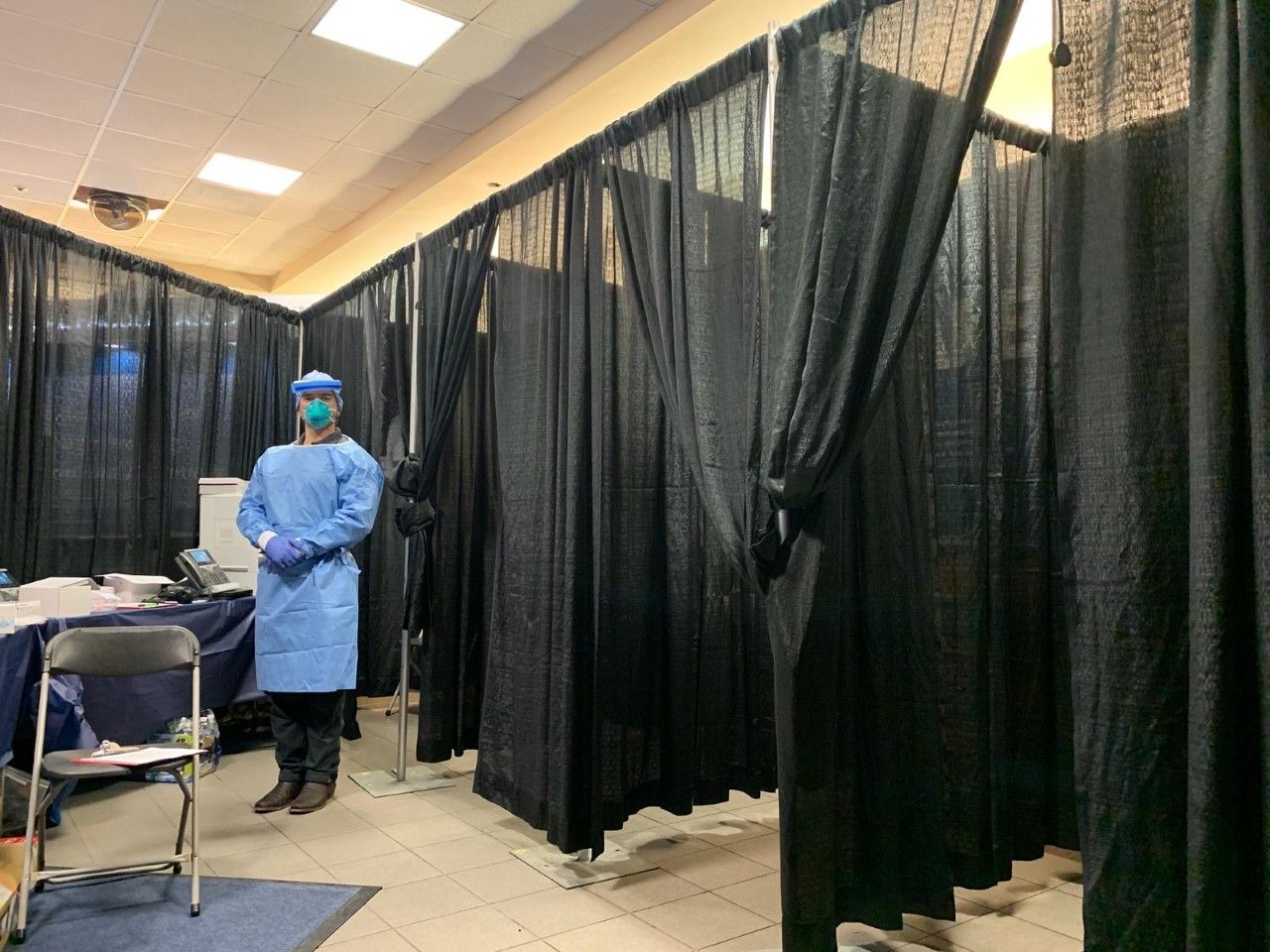
Figure 2: Dr. Alptunaer preparing to test patients in the GW-MFA outpatient lobby. Multiple patients could be evaluated at once.
The third way that the EMED Strike Team has improved access to testing is through a collaboration with DC DOH and the DC Medical Reserve Corps (MRC) to set up drive-through testing. While significantly more labor-intensive to set up, this modality has allowed for the highest volume community testing. The advantages of drive-through testing include minimizing exposure to both the public and healthcare providers. Patients are in a closed environment of the car and the window is only lowered just prior to nasal swabbing(Figure 3).
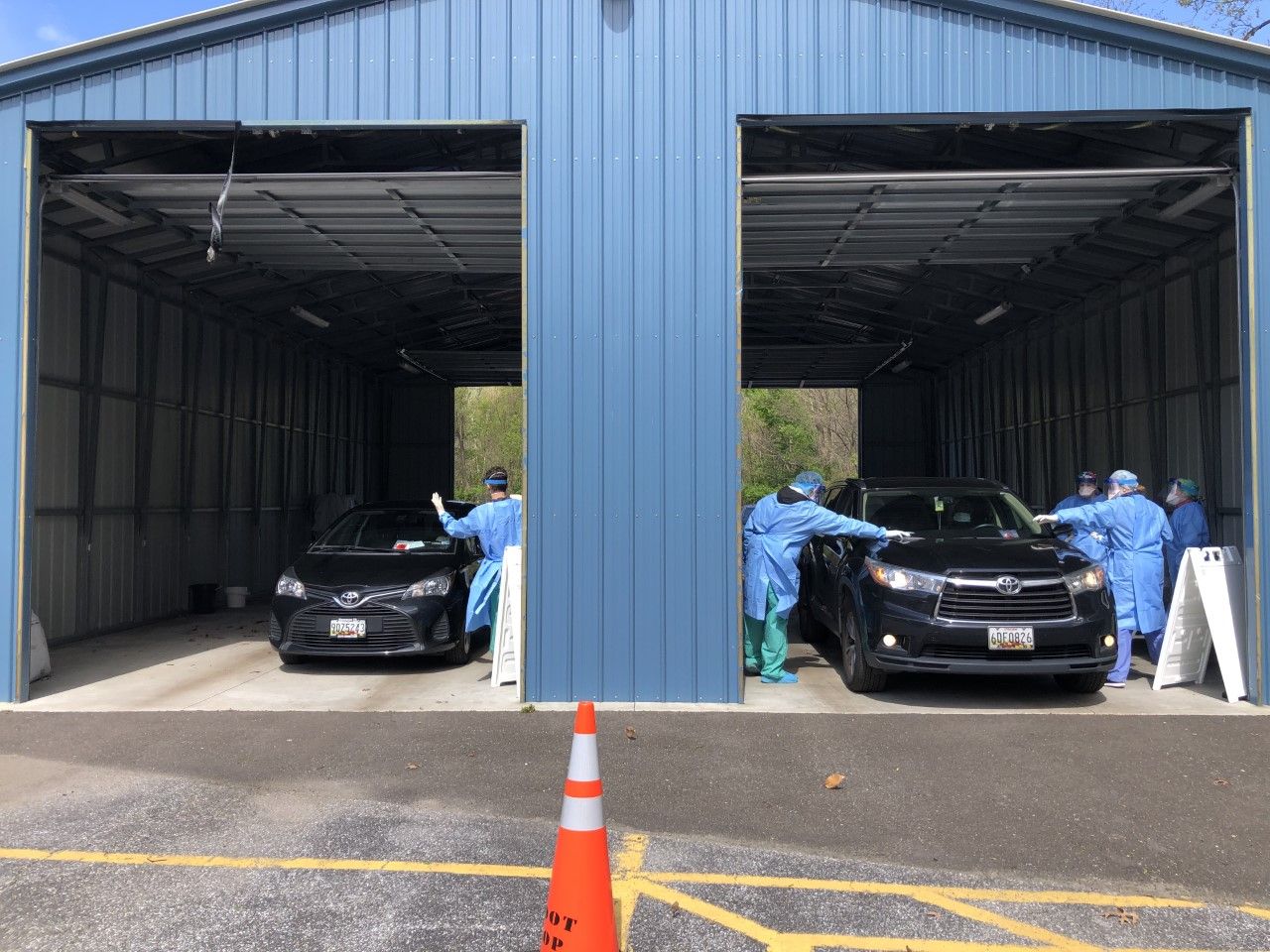
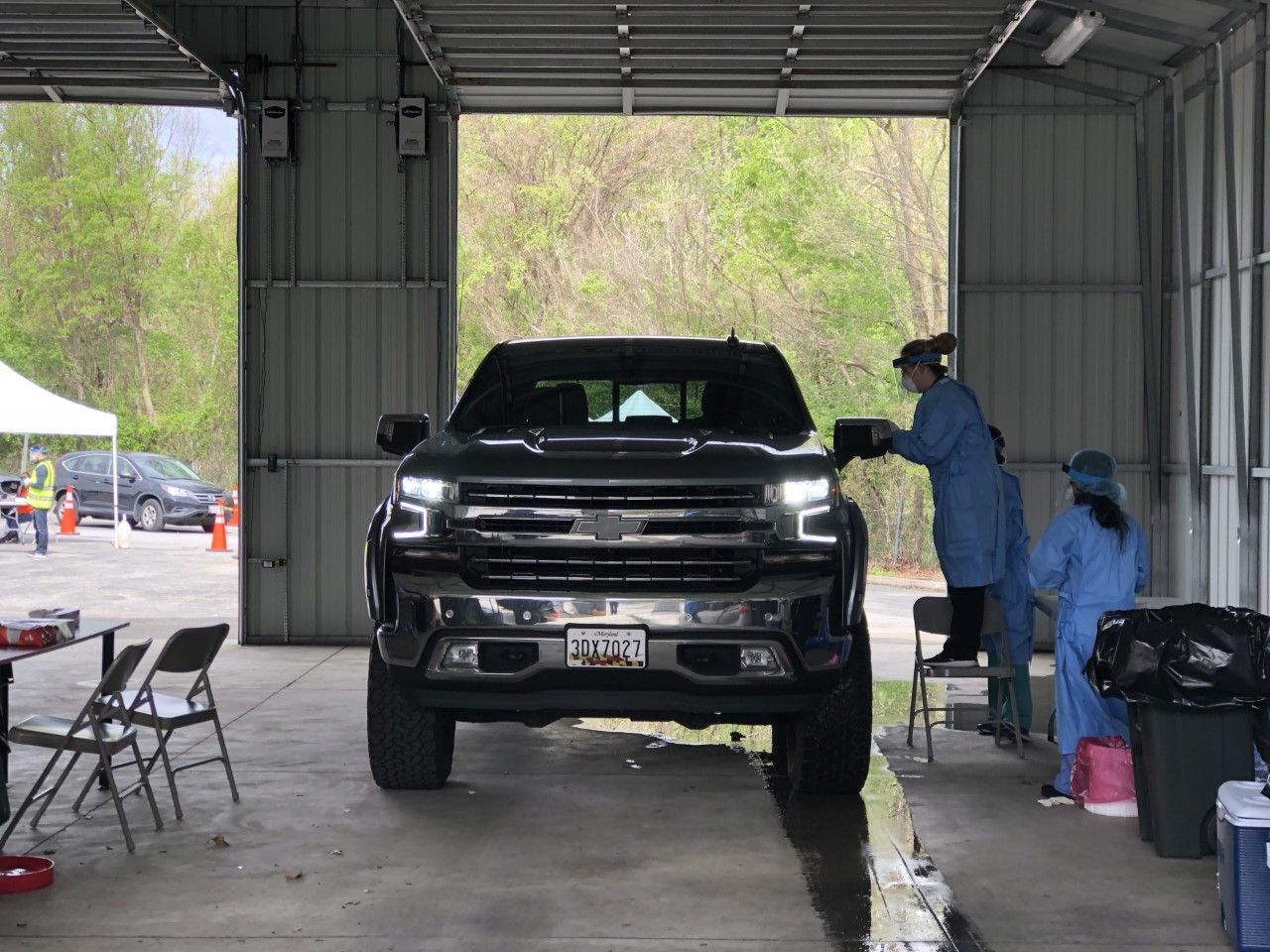
Figures 3a and 3b: Strike Team members performing testing at a drive-through testing site near United Medical Center in Southeast DC.
The GW EMED Strike Team has made significant progress towards increasing testing in Washington, DC. Safety for healthcare workers and patients has always been a top priority for team members. At this time of this writing, all three methods of testing continue to be utilized with plans to begin efforts for contact tracing soon.
References:
- Centers for Disease Control and Prevention. (2020, Mar. 18). Coronavirus Disease 2019: Know How It Spreads. Retrieved from https://www.cdc.gov/coronavirus/2019-ncov/prevent-getting-sick/preventio....
- World Health Organization. (2020, Mar. 9). Q&A on coronaviruses (COVID-19). Retrieved from https://www.who.int/news-room/q-a-detail/q-a-coronaviruses#:~:text=symptoms.
- Hernandez, Sergio et al. (2020, Mar. 30). Tracking COVID-19 cases in the US. Retrieved from https://www.cnn.com/interactive/2020/health/coronavirus-us-maps-and-cases/.
- Oreskes, Benjamin et al. (2020, Mar. 29). 5 more coronavirus deaths in L.A. County; total cases top 2,100. Retrieved from https://www.latimes.com/california/story/2020-03-29/hospitals-california....
- Alptunaer, Timur. (2020, Mar. 26). ASTRO presentation EM doc.mov [Video File].
- US Environmental Protection Agency. (2020, Mar. 30). List N: Disinfectants for Use Against SARS-CoV-2. Retrieved from https://www.epa.gov/pesticide-registration/list-n-disinfectants-use-agai....
- Palmer, B. J. (n.d.). Study Finds Major Problems With PPE Doffing - Patient Safety & Quality Healthcare. Patient Safety & Quality Healthcare. Retrieved May 2, 2020, from https://www.psqh.com/analysis/study-finds-major-problems-with-ppe-doffing/

Justin Hull is a research fellow for Urgent Matters. A graduate in neuroscience from George Mason University. He is a medical scribe at George Washington Hospital while studying to get into medical school and has also scribed at Inova Fairfax Hospital ED.
Jordan Selzer, M.D.

Jordan Selzer is a Disaster and Operational Medicine Fellow and Emergency Medicine Physician at George Washington University. His areas of focus include operationally focused disaster response work as well as healthcare cybersecurity. He has significant disaster response experience: having worked in the US Virgin Islands after Hurricanes Irma and Maria as well as the Bahamas after Hurricane Dorian. His cybersecurity work has included collaborating with FDA regulators, FBI cybersecurity experts, and medical device security researchers. He is also a co-founder of an app-based medical tech startup MayJuun, focused on improving physician experience of healthcare delivery.
Dr. Selzer attended medical school at Loyola University Chicago and completed his residency in Emergency Medicine at Maricopa Medical Center in Phoenix, Arizona. He is currently pursuing a Master in Public Health degree from George Washington University with a focus in Humanitarian Health and Emergency Management.